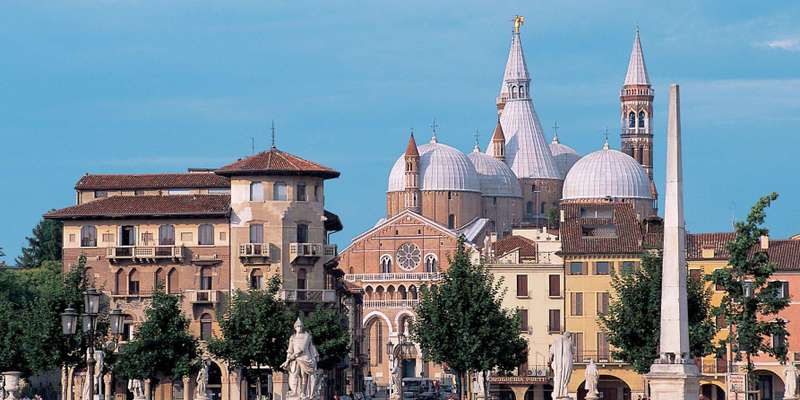- Home
- Useful Tips
- Padua's connection to Galileo:...
Many travelers arrive in Padua unaware of its profound connection to Galileo Galilei, missing key sites where the father of modern science taught, researched, and made groundbreaking discoveries. Over 60% of visitors to Padua's famous Scrovegni Chapel leave without exploring nearby Galileo locations, according to local tourism data. This oversight means missing tangible links to revolutionary ideas that changed our understanding of the universe. The challenge lies in identifying authentic Galileo sites among Padua's dense medieval streets and understanding their significance without specialized knowledge. Between confusing opening hours and overlooked details in guidebooks, visitors often leave with only superficial appreciation for how Padua's academic environment shaped Galileo's eighteen transformative years here. The frustration of returning home to discover you walked past crucial history is real – especially when standing where Galileo first observed the stars could have been the trip's highlight.


Locating Galileo's actual teaching podium at Palazzo Bo
Within Padua University's historic Palazzo Bo, Galileo's original wooden lectern stands preserved in the Aula Magna, where he taught mathematics from 1592-1610. Many visitors overlook this unassuming artifact, not realizing it's the very platform from which Galileo mentored future scientists while developing his early theories. The room's current Renaissance appearance dates from Galileo's era, with heraldic crests of scholars watching over the same space where he challenged Aristotelian physics. To find it, head to the inner courtyard's right wing – the aula isn't always included in standard university tours, so verify access times at the ticket office. Local guides recommend mornings on weekdays when student groups are fewer, allowing quiet reflection where Galileo debated the nature of motion with colleagues. The adjacent Hall of Forty features Galileo's only known portrait painted during his Padua years, often missed by those rushing to see the more famous anatomical theater.
Decoding Galileo's house facade near Padua market
The unmarked building at Via Galilei 12 hides an extraordinary secret – Galileo's residence during his most productive Padua years, where he improved the telescope and discovered Jupiter's moons. Unlike Florence's carefully preserved Galileo museums, this working apartment building offers no plaques or displays, leaving most visitors oblivious. Local historians identify it by the distinctive lion-head door knocker (original to Galileo's time) and trapezoidal windows visible in 17th-century engravings. Come at golden hour when the light angles match Galileo's documented observation times, and you'll understand why he chose these south-facing windows for astronomy. Nearby Antico Dolo serves cicchetti in a building Galileo frequented – try their baccalà while imagining the scientist debating Copernican theory here. For clearer interpretation, the small Galileo Room at Padua's Museo di Storia della Medicina displays instruments he may have used, including rare editions of his Padua-era manuscripts.
The hidden Galileo garden where experiments happened
Behind Santa Giustina Basilica lies the Orto Botanico, the world's oldest academic garden where Galileo taught medicinal uses of plants. Few realize its circular hortus sphaericus represents the cosmic order Galileo studied, with plantings arranged as he knew them. The garden's sundial follows Galileo's instructions for celestial measurements, though most visitors pass it without understanding its connection to his pendulum experiments. Time your visit for the 11 AM guided tour (Tuesdays and Thursdays) when volunteers demonstrate how Galileo used the garden's incline for gravity tests. Spring brings blooming 'Galilean roses' descended from specimens he examined, while winter reveals the geometric layout mimicking his diagrams of parabolic trajectories. The adjacent Specola tower, though built post-Galileo, houses instruments matching those he described in Padua lectures – ask about the special access tour showing replicas of his early thermoscopes.
Following Galileo's stargazing route along the Bacchiglione
Galileo's nightly walks along Padua's riverbanks yielded celestial observations that challenged millennia of belief. Today, a little-known riverside path from Ponte Molino to Porta Portello retraces his likely route, with informational stones marking where particular discoveries may have occurred. The best time is dusk, when the water's reflection creates the same 'double horizon' Galileo used to calibrate his instruments. Local astronomers sometimes set up telescopes near Torre della Specola on clear evenings, recreating his viewing conditions. For deeper insight, the Padua Observatory (Osservatorio Astronomico) offers monthly 'Galileo Nights' using replica telescopes – reservations are essential as groups are kept small. Those preferring self-guided exploration should download the university's free Galileo Trail map, highlighting seven riverbank spots with augmented reality features showing how the night sky appeared in his time. Remember to look east toward the Euganean Hills, where Galileo frequently retreated to escape city lights – the same view now protected as part of Padua's UNESCO recognition for preserving its scientific heritage.



